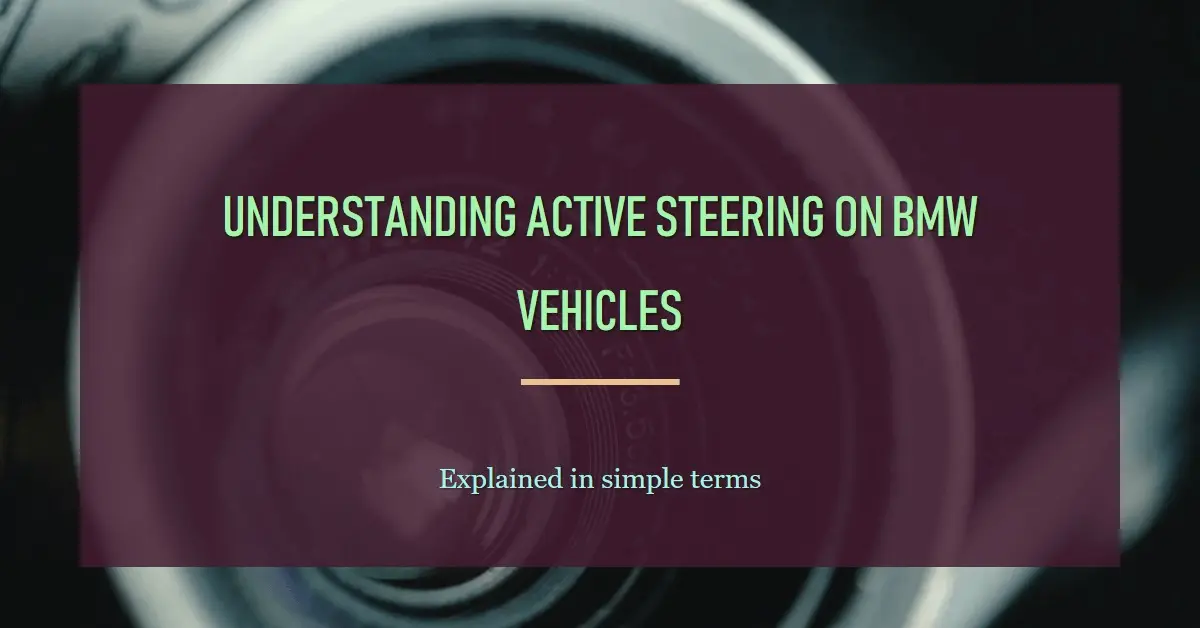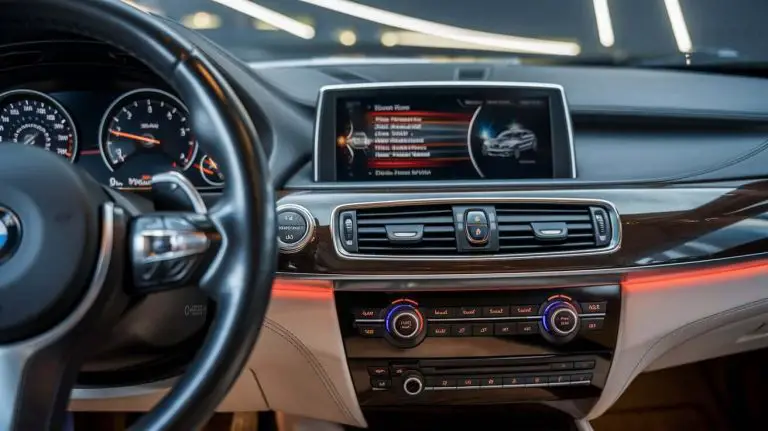What is Active Steering on BMW Vehicles?
BMW is renowned for its exceptional steering and handling capabilities. Technologies like active steering take the acclaimed BMW driving experience to new levels. But what does this innovative feature actually do?
Active steering gives BMW models variable steering ratios that continuously adapt based on driving conditions. This provides both nimble control at low speeds and enhanced stability at highway speeds. Integrated electronics also enable advanced safety features and pave the way for future autonomous driving systems.
Let’s explore what makes BMW active steering so intelligent, how the technology has evolved, and what it means for drivers.
How BMW Active Steering Works
Most vehicles have a fixed relationship between the steering wheel angle and front tire angles. But with active steering, BMW employs an ingenious planetary gear system within the steering column enabling adjustable steering ratios.
Variable Ratios
A control motor can essentially dial different ratios between driver inputs and wheel outputs:
- Tight spots need heavy steering for sharper turn angles
- High speeds require subtle reactions to avoid oversteer
Continuous Adaptation
By factoring in speed, stability sensors, GPS mapping, and driving mode, the variable system provides optimized steering responsiveness for current conditions.
Stability System Integration
The onboard computer communicates with systems like ABS and traction control. By adjusting steering angles faster than humanly possible during instability, it enhances accident avoidance.
Backup Mechanical Linkage
If unlikely total electrical failure ever occurs, a mechanical linkage ensures the driver maintains control of steering.
Active Steering Benefits
How does BMW active steering’s intelligent variable steering ratios impact real world experience?
Easy City Maneuverability
Around town, a slight turn of the wheel results in sharper tire angles for nimble low-speed agility, easing tight parking spots.
High Speed Security
On highways, subtle adjustments gently influence vehicle heading to resist oversteer. Straight line driving becomes more secure and relaxed without constant micromanagement.
Enhanced Safety Systems
By seamlessly coordinating steering actuation with stability programs, active steering significantly improves accident avoidance in handling emergencies beyond driver reaction times.
Rear Wheel Maneuverability
Upgraded systems can counter-steer rear tires at low speeds for even tighter turns, making navigating cramped garages effortless.
BMW Integral Active Steering
Building on their successful active steering platforms, BMW introduced Integral Active Steering (IAS) in 2006. This supplements front axle controls with electronic rear tire steering adjustments.
Opposite Angle Rear Steering
At slower city speeds, IAS angles rear tires slightly counter to fronts for vastly reduced turning circles.
High Speed Cohesion
Approaching highway rates, rear wheels incrementally transition to match front angle orientations. This lends stability through curves as all four corners cohesively change headings.
Continuous Adaptation
IAS constantly recalibrates rear tire angles based on vehicle sensors, seamlessly shifting between opposite and same-direction orientations as speeds and conditions dictate. This helps the vehicle gracefully glide through any maneuvers.
History of BMW Active Steering
BMW’s steady active steering development over 20 years demonstrates their commitment to innovations enhancing signature driving dynamics.
Originating Technologies
BMWs laid foundations for active steering controls in the 1990s introducing electronic automatic damping of sudden steering motions at higher speeds. This helped resist uncontrolled oversteer in emergencies.
First Active Steering in 2003
The first planetary gear-based variable ratio active steering system launched under the name Active & Comfort Steering in 2003 for the 5 series luxury sedan. This pioneering platform dynamically adjusted steering ratios based on driving conditions.
IAS Integration
After introducing Integral Active Steering in 2006, BMW has continually expanded the technology across model lines to the present day. It now features in everything from 3 series compacts to 7 series limos and X5 luxury SUVs.
Consumer Impressions
Given its intricacies, how do real world BMW drivers regard active steering? Opinions run the gamut depending on applications.
Initial Mixed Response
Early variable systems took some adaptation for drivers accustomed to consistent steering feedback. Different ratios in various modes could catch some off guard despite BMWs efforts at intuitive transitions.
Strong Low Speed Support
But most recognized immediate improvements in low speed agility. Tight parking spots and crowded urban areas became easy to navigate with the dynamic high ratio city steering.
Divided Highway Opinions
Attenuated high speed steering aimed at relaxed cruising arguably diluted pure performance handling for some enthusiasts. But most consumers welcomed the enhanced long distance stability and accident avoidance.
Ideal for Large Luxury Vehicles
Reviewers tend to consider active steering advantages best suited to higher end luxury sedans and SUVs. These large vehicles already demand assistance maneuvering at low speeds where the tight steering ratios excel.
Promising Future Autonomous Support
As automated driving capabilities progress, BMWs proven electronic variable steering adaptations present a strong foundation for related innovations. Their integrated accident prevention already builds driver confidence in semi-autonomous development.
Identifying Active Steering Models
With few obvious indicators differentiating it, here are some tips for recognizing if your BMW has variable active steering:
Check Equipment Packages
The easiest confirmation comes from comparing model year production specs showing which steering assist suites BMW factory installed for the series in question.
Inspect Steering Reservoir
On earlier generation 5 and 7 series, a taller than typical cylindrical power steering fluid reservoir signifies the presence of active steering mechanical upgrades.
Conclusion
BMW’s signature precise steering was already class leading before active innovations like adjustable steering ratios and integrated stability controls elevated capabilities even further. By dynamically optimizing steering response for conditions, these intelligent systems underscore BMW’s commitment to balancing driver engagement with technological progress now and in the future autonomous age.
So next time you slide behind the wheel and head for a winding back road or cramped urban parking spot, you can appreciate your BMW’s mechanical symphony smoothly calibrating steering ratios turn by turn. Active steering puts enhanced control and safety at your fingertips to handle any dynamic driving demands.







